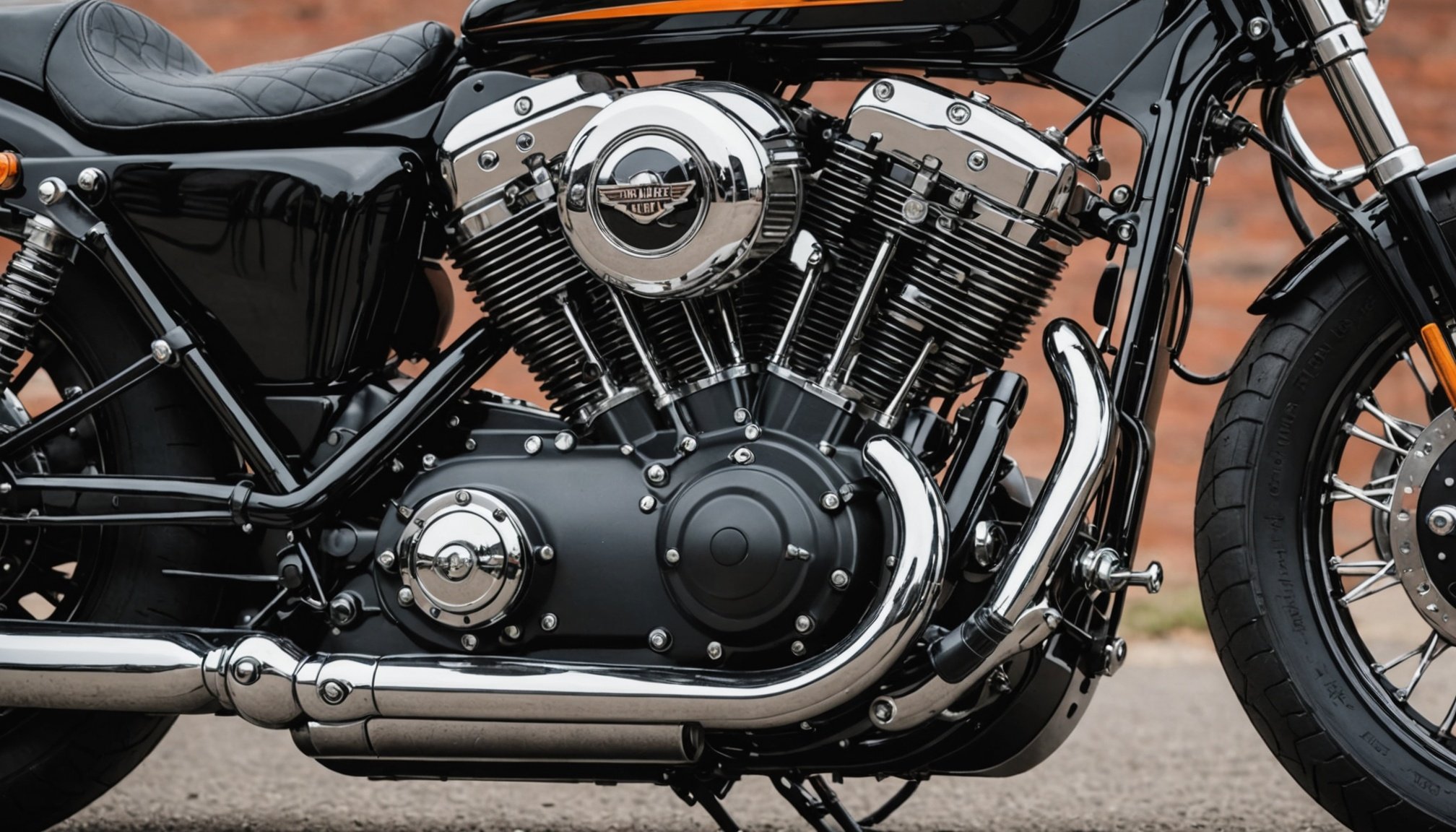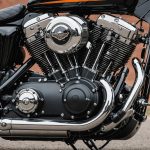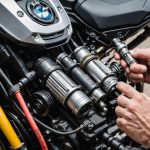Importance of Belt Drive Maintenance
A belt drive system is a crucial component of many Harley-Davidson motorcycles, enhancing both performance and reliability. Unlike traditional chains, belt drives require less maintenance but are not maintenance-free. Understanding the system’s significance begins with recognizing how it contributes to smoother rides and improved efficiency.
Regular belt drive maintenance is essential for optimal performance enhancement and extending the longevity of your motorcycle. Consistent upkeep helps in preserving the integrity of the belt, ensuring it functions effectively without undue strain or wear. This maintenance involves regular inspections and adjustments, detecting any signs of wear such as cracks or fraying early.
Also read : Step-by-Step Guide: Testing the Ignition Coil of Your Suzuki GSX-R750 with a Multimeter
Neglecting Harley-Davidson care can lead to dire consequences, including reduced efficiency and increased mechanical failures. A damaged belt might snap mid-journey, leading to costly repairs and potential safety hazards. Moreover, without proper care, you’ll likely face a gradual decline in performance, affecting the motorcycle’s fuel efficiency and acceleration.
Thus, ensuring routine maintenance of your belt drive system is not merely an option but a necessity for any Harley-Davidson owner. Being proactive in your care regimen supports continuous performance and safeguards your investment against unforeseen breakdowns.
Topic to read : Mastering Fuel Injector Issues: A Step-by-Step Guide to Diagnosing and Resolving Problems on Your BMW S1000XR
Essential Maintenance Checklist
Regular upkeep ensures your tools and appliances function optimally. An effective maintenance checklist includes key components and timelines, ensuring smooth operation and longevity.
Begin by drafting an inspection guide. This should highlight critical areas such as the electrical system, moving parts, and safety features. Examine these components regularly to prevent unforeseen malfunctions. A well-structured checklist enhances efficiency by providing a systematic approach to inspections.
Following a routine care schedule is vital. Experts recommend performing a thorough inspection every three to six months, depending on usage intensity. For heavy equipment or appliances used daily, more frequent checks may be necessary. Regular inspections help in identifying minor issues before they escalate into costly repairs.
Equipping yourself with the right tools is also essential. Basic items include a multimeter for electrical evaluations, screwdrivers for securing loose parts, and lubricants for moving components. Having the correct tools on hand not only saves time but ensures inspections are conducted thoroughly and safely.
Adhering to this maintenance checklist and employing a proactive approach guarantees your appliances and tools remain reliable and efficient over time, providing peace of mind and saving on long-term costs.
Step-by-Step Inspection Process
A thorough inspection process is essential to ensure optimal performance and longevity of your equipment. Regular checks can identify potential issues early, saving both time and money in the long run.
Visual Inspection of the Belt
Begin with a visual inspection of the belt. Examine it for any visible signs of wear or damage, such as fraying, cracks, or splits. Ensure that the belt surface is smooth and free of debris. Detecting these issues early can prevent more severe damage. If imperfections are found, consider replacing the belt to maintain efficient operation.
Checking Belt Tension
Accurate belt tension is crucial for the effective operation of machinery. To check tension, press on the belt between two pulleys and note any excessive slack. The belt should be firm but not overly tight. If adjustments are needed, use the specific adjustment techniques for your equipment. A properly tensioned belt ensures smooth functioning and reduces wear.
Inspecting Alignment
Finally, focus on inspecting the belt’s alignment. Misalignment can lead to uneven wear and reduce the belt’s lifespan. Use a straight edge or laser alignment tool to ensure the belt is parallel to its pulleys. Correct alignment contributes to the efficiency and performance of the system.
Common Belt Drive Issues
In any belt drive system, encountering issues is not uncommon. These performance problems can generally be categorized into a few typical areas. One such issue is belt slippage, where the belt does not maintain adequate tension and slips over the pulleys. This can lead to reduced efficiency and increased wear on the system. Another frequent problem is belt misalignment, where the pulleys are not properly aligned, causing uneven wear or even belt breakage.
Signs that indicate a potential failure include unusual noises, such as squealing or grinding, and visible wear and tear on the belt, such as cracking or fraying. If you notice these signs, it’s crucial to address them promptly to maintain performance and avoid further damage.
For quick troubleshooting, start by checking the tension of the belt. A correctly tensioned belt is essential for optimal performance. Also, inspect the alignment of your system; a straightedge or laser alignment tool can be useful here. Finally, consider the ambient environment; dust and debris can degrade belt performance, so keeping the area clean can prevent minor issues from becoming significant problems.
Recommended Tools and Products
Effectively maintaining a belt drive system requires a careful selection of tools and products. Essential tools include belt tension gauges and alignment lasers, both crucial in ensuring optimal performance. A belt tension gauge helps measure and adjust the tension of the belt to prevent slipping, while an alignment laser ensures that the pulleys are precisely aligned, reducing wear and tear on the system.
Recommended lubricants play a significant role in maintaining the belt drive’s efficiency. Silicone-based lubricants are highly effective, providing a smooth operation and reducing friction, thereby prolonging the belt’s lifespan. It is crucial to apply these lubricants sparingly to avoid attracting dust and debris.
High-quality cleaning products designed specifically for belt drives can significantly enhance maintenance routines. These products effectively remove dirt and build-up without degrading the belt material.
When sourcing quality maintenance supplies, purchasing from reputable vendors guarantees authenticity and reliability. Online marketplaces often provide a vast selection, but it is critical to choose products from established brands to ensure durability and efficiency. Specialty automotive or industrial supply stores are excellent sources for these essential tools and products, offering a wider range of professional options.
Safety Precautions During Maintenance
Engaging in motorcycle maintenance requires strict attention to safety precautions to ensure a secure and accident-free environment.
Personal protective equipment (PPE) is vital for safeguarding yourself during maintenance activities. Items such as gloves, goggles, and sturdy footwear offer protection from potential hazards, such as sharp components or accidental spills. Prioritising the use of PPE acts as a first line of defense and demonstrates a commitment to maintenance safety.
When working with motorcycle components, it’s essential to adhere to some best practices to prevent injuries. Start by ensuring the bike is stable, using a stand if necessary, to avoid unexpected tipping. Be cautious with hot engine parts, allowing adequate cooling time before handling. When working on electrical components, disconnect the battery to eliminate the risk of electric shock.
To avoid common accidents, keep your work area organised and clutter-free. Tools should be stored safely after use to prevent tripping or injuries. Moreover, maintaining a clean workspace minimises distractions and enhances focus, crucial for a safe maintenance session. By following these maintenance safety guidelines, you foster a safe environment, reducing potential risks efficiently.
Frequently Asked Questions
Before delving into belt drive care, it’s essential to dispel a few common misconceptions. One myth is that belt drives require constant lubrication, which isn’t true. Unlike chains, belt drives are self-lubricating and resistant to rust, making them low-maintenance.
Expert Tips for Improving Performance
Regularly inspect your Harley-Davidson’s belt drive for signs of wear and tear. Even though it doesn’t demand frequent lubrication, checking for damage like cracks or frayed edges can prevent performance issues. Tightening the belt to the manufacturer’s specifications is crucial, as overly tight or loose belts can lead to complications.
Additionally, keeping the belt drive clean is vital. Road debris can accumulate and subsequently impact the drive’s longevity and efficiency. Use mild detergent and a soft brush for cleaning without causing any abrasion.
Additional Resources
If you’re seeking more comprehensive guidance, consider consulting Harley-Davidson’s official resources or visiting a licensed service center. They provide detailed manuals offering in-depth belt maintenance procedures and specifications. Forums and communities online are also valuable for sharing experiences and receiving tailored advice. For further exploration, reach out to a trusted professional who possesses extensive expertise and can provide tailored suggestions for your specific motorcycle model.











